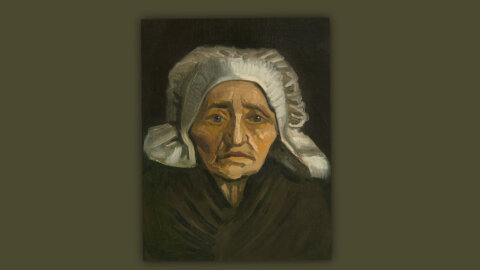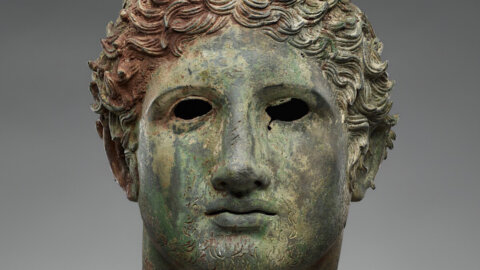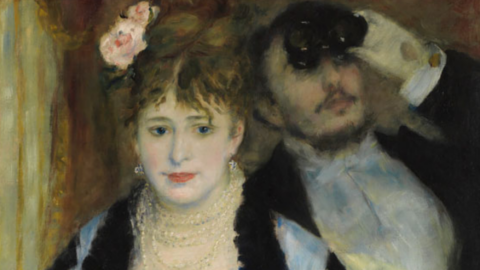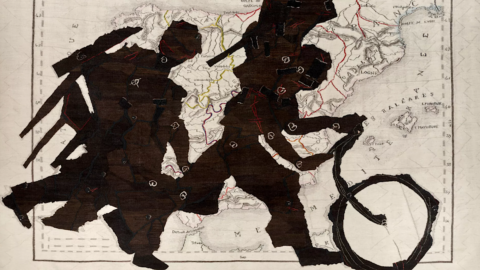Great anticipation for the edition of TEFAF 2024 which will be held in Maastrich from 9 14 to March next. 270 international galleries that will present extraordinary works not yet presented on the market. A strong turnout of collectors from all over the world is expected, awaiting the "masterpiece" yet to be discovered. From the previews, a return is expected, especially for ancient art, treasure chests that preserve time that return to conquer the art market.
“First Look” demonstrates the unrivaled appeal of TEFAF Maastricht as a destination for private collectors, museum curators, art market professionals and enthusiasts. Recognized as globally as the world TEFAF Maastricht, the leading art fair, antiques and design, offers unprecedented collecting opportunities, bringing together the culmination of 7.000 years of art history from ancient to contemporary.
270 Galleries from 22 countries
This year the fair includes 270 of the most important retailers e galleries from 22 countries, 18 of whom are first-time exhibitors. 10 galleries will be featured in the TEFAF Showcase section, which since its inception in 2008 has led the way in offering a platform at major fairs to emerging and younger galleries. A novelty for the 2024 is the launch of TEFAF Focus, a dedicated section that provides galleries with a curatorial platform to delve into the work of a single artist or concept, expanding the definition of an art fair where thought-provoking connections between different art forms are brilliantly showcased and appreciated.
A selection of “First Look” works from Van Gogh to Richter
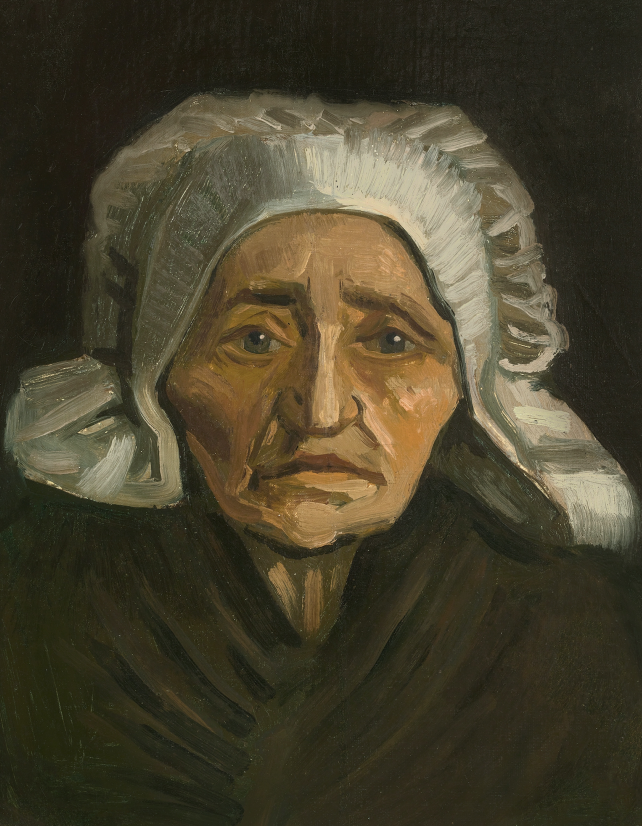
Vincent van Gogh – Tête De Paysanne Alla Coiffe Blanche – Around 1884 – Oil on canvas applied on board – 62,9×48,1 cm – Presented by MSRau Fine arts and antiques
Tête De Paysanne À La Coif e Blanche shows off Vincent van Gogh in a powerful ability to capture both the likeness and essence of his models. Rendered with thick, deliberate brushstrokes, Van Gogh paints his sitter with a powerful, uninterrupted gaze. Van Gogh did not seek to portray the local peasants as an outsider who views them as a spectacle, but rather from a place of empathy. Touching and intimate, Tête De Paysanne À La Coif e Blanche immortalizes an ordinary local woman from Nuenen in a deeply emotional way.
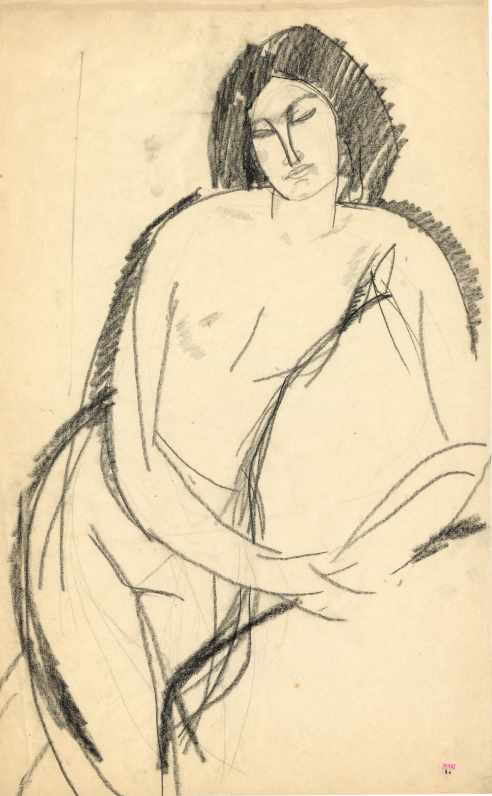
Amedeo Modigliani Femme nue s'appuyant sur l' avant-bras gauche -Around 1910 – Pencil on vellum paper – With Dr. Paul Alexandre's stamp and number – 86 43 x 26,7 cm – Presented by Agnes Works on paper
This drawing fascinating from collection of Dr. Paul Alexandre, made around 1910, anticipates Modigliani' His famous nudes were painted only a few years ago subsequently, predicting most of his characteristics: the almond-shaped eyes. The liberal exaggeration of certain volumes; an impression of tranquility and sensuality. One can still sense the artist's admiration for Cézanne, whose major retrospective he had seen in Paris in 1907. The admiration for non-European art is also found in the woman's face, which has a gentle and stylized expression composition, organized around his elongated nose. The drawings were not made accessible to the public until 1993, when it allowed the discovery of the artist's initial process and works.
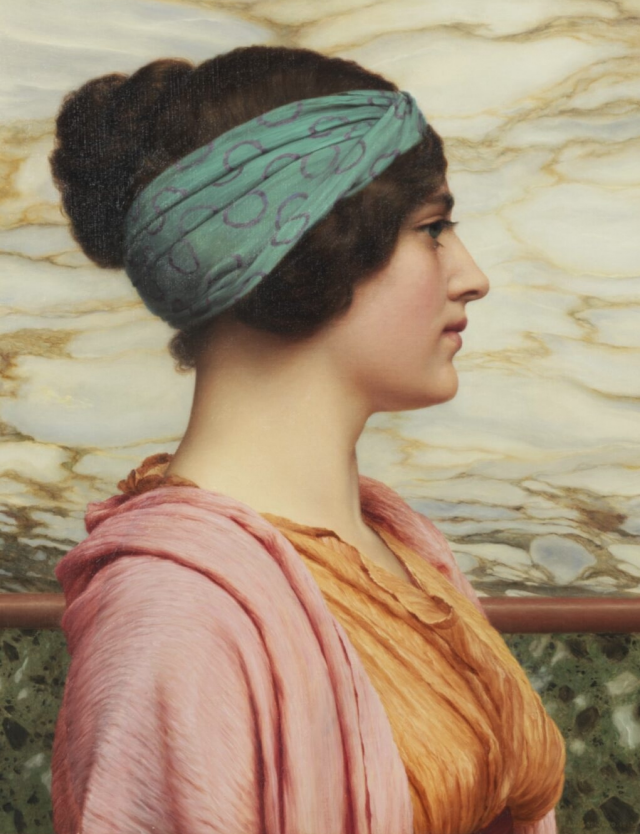
John William Godward – Dorillab – 1913 – oil on canvas – signed 'JW Godward 1913 – 50 x 40 cm - Berardi Gallery
Dorilla is one of the precious profiles created by John William Godward, last of the great English Pre-Raphaelites, painter of pure Apollonian beauty in the early 1909th century. Rome is the splendid setting for the classic aesthetic precision of his girls in profile, a small gallery of women portraits with Roman names, which Godward began to paint in XNUMX. Dorilla's portrait is the representation of eternal female beauty. Her darkness, her hair is gathered in a blue band decorated with purple circles, the bright colors of her golden dress and pink stole stand out against the grained background, up to the Serpentine marble below.
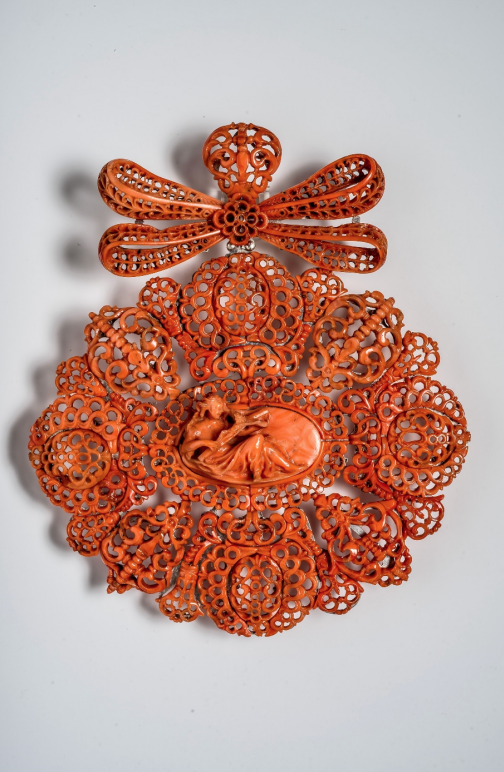
Bedside bed in the shape of a devotional pendant depicting Mary Magdalene – Around 1700 – Coral and silver – 20×17×1 cm. Presented by Deborah Elvira
Bedside with the shape of a devotional pendant depicting Mary Magdalene is a hanging work of art representing a female figure holding a framed crucifix topped with a bow of perforated coral. The set is made of worked material, perforated and carved corals, tied with silver thread to two riveted perforated silver plates, which act as a support
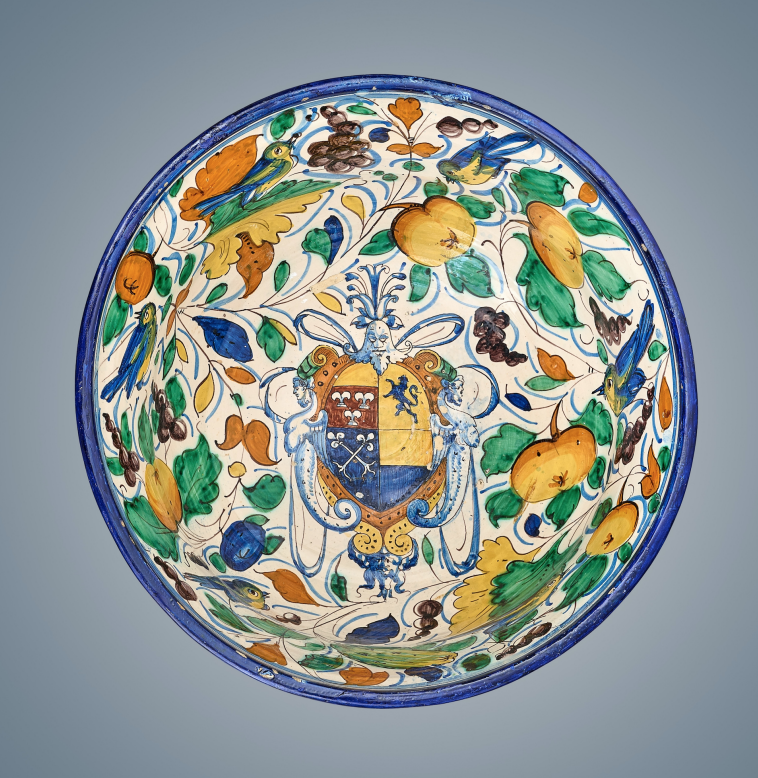
A large Italian majolica wine cooler (refresher), with arms of four prominent and ancient Florentine families - Circa 1570 - 26,5 x 45 cm - Presented by Flore
This wine cooler, with polychrome patterned leaf and fruit, is decorated with a cartouche containing the coat of arms of four illustrious and ancient Florentine families: Frescobaldi, Del Bene, Gianigliazzi and Adimari, all marked by their loyalty to the Guelph faction, which historically had taken part in disputes with the Holy Roman Emperor. This cooler also boasts an impressive twentieth-century provenance, as it was in the important Tuscan collection of Luigi Pisa (1890-1930). The vessel is notable for its sail size and elaborate decorations.
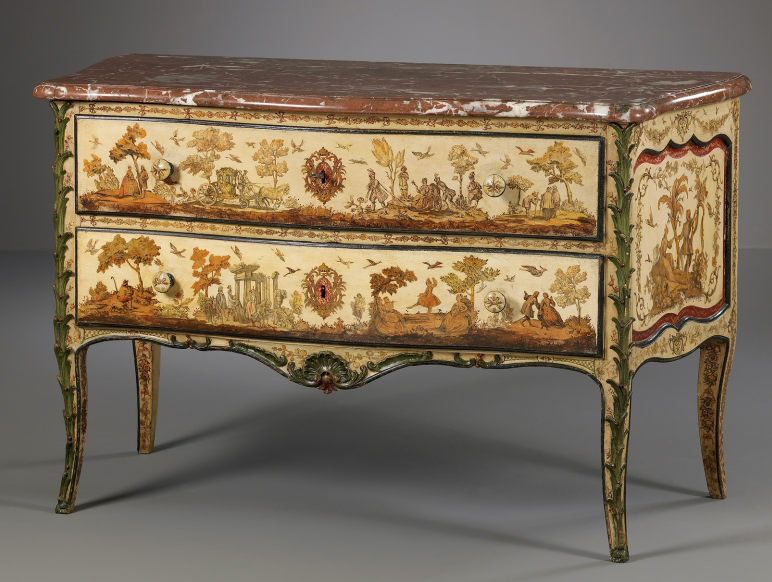
French Povera Lacquer Dresser 1735-1740 – Cream lacquered walnut and oak core, covered in lacquered cut-out and colored prints, Rouge Royal marble top – 90 x 144 x 70 cm – Presented by Kollenburg Antiquairs
This cream colored dresser It is a rare example of Lacca Povera furniture from Provence, made around 1735-1740. The technique is known as arte povera or Lacca Povera, and originated in Venice. There Poor Lacquer it was an imitation of the oriental lacquerware that flourished in the city. They were cut out and colored prints pasted onto painted furniture, after which the whole thing was lacquered, resulting in a cheaper alternative to Oriental lacquered furniture, which was much more expensive at the time.
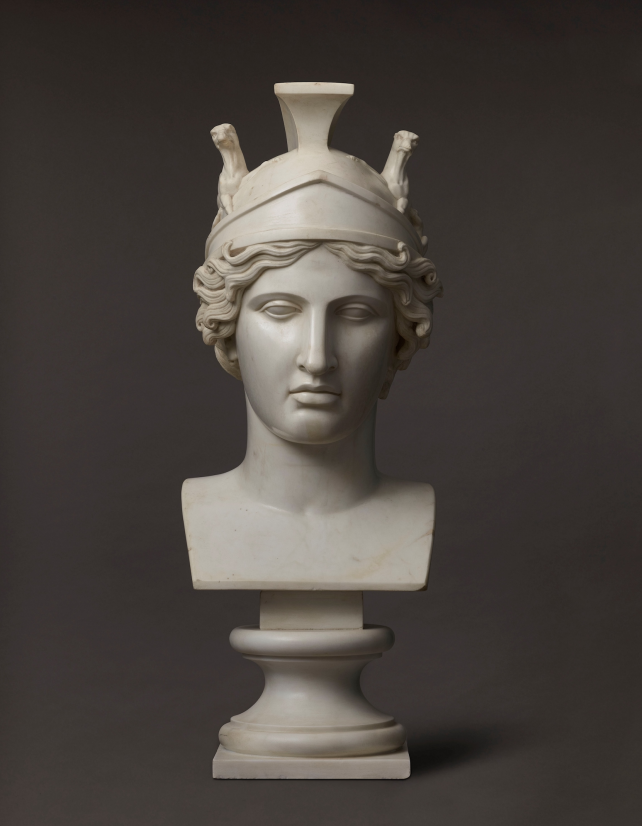
Vincenzo Pacetti – Hope Rome Circa 1783-1802 Marble 93,5 cm – Presented by Stuart Lochhead Sculpture
This monumental sculptured marble bust titled The Hope Rome present in the famous collection of one of the greatest designers and connoisseurs, Thomas Hope (1769-1831). The work was commissioned in Rome and created by the famous sculptor Vincenzo Pacetti, who worked closely with the Borghese family and the Pope who restored ancient sculptures. The bust, an effigy of the Eternal City, was only recently rediscovered in a private collection.
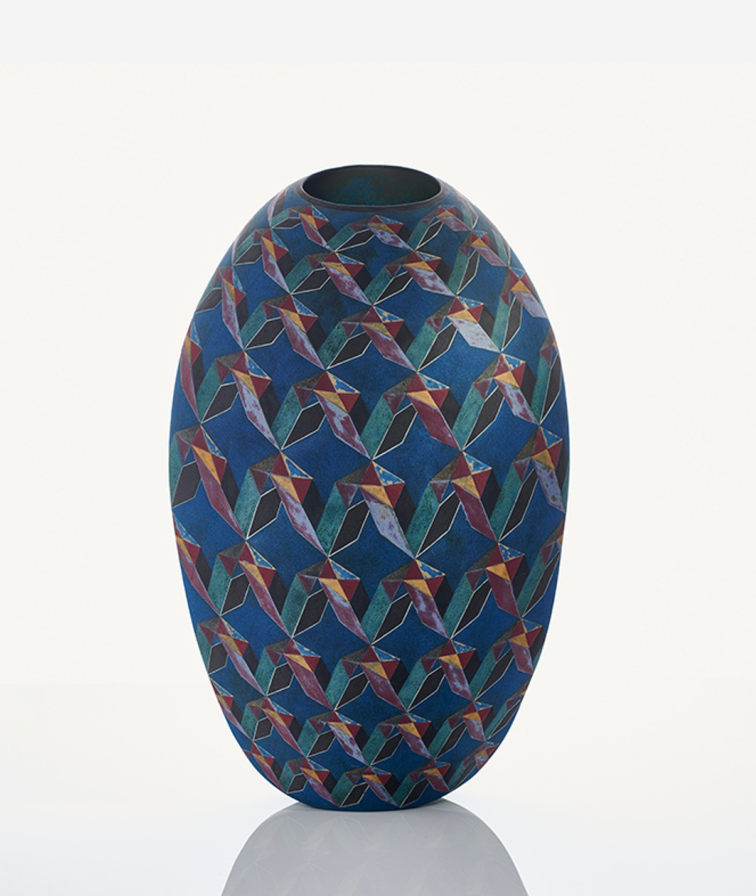
Elizabeth Fritsch – Quantum Pocket IV- 2010 – Hand-built stoneware – Presented by Adrian Sasoon
Hand-crafted stoneware 43 x 27 x 11 cm (16,9 x 10,6 x 4,3 inches).Quantum Pocket IV is an astonishing tour de force that investigates the spatial relationship between two and three dimensions. Representing the paradoxical effects of curved space and flatness, it is entirely hand-built and features a bold visualization of cubic rectangles, each differently sized and positioned at different angles. Inspired by Argentine writer Jorge Luis Borges' 1942 surrealist story, Death and the Compass, embodies the tale of Elizabeth Fritsch's intellectual pursuits in fields such as literature, metaphysics, music and mathematics. Quantum Pocket IV is part of a series of four artworks, one of which is in the Fitzwilliam Museum, University of Cambridge, and another in the artist's personal collection.
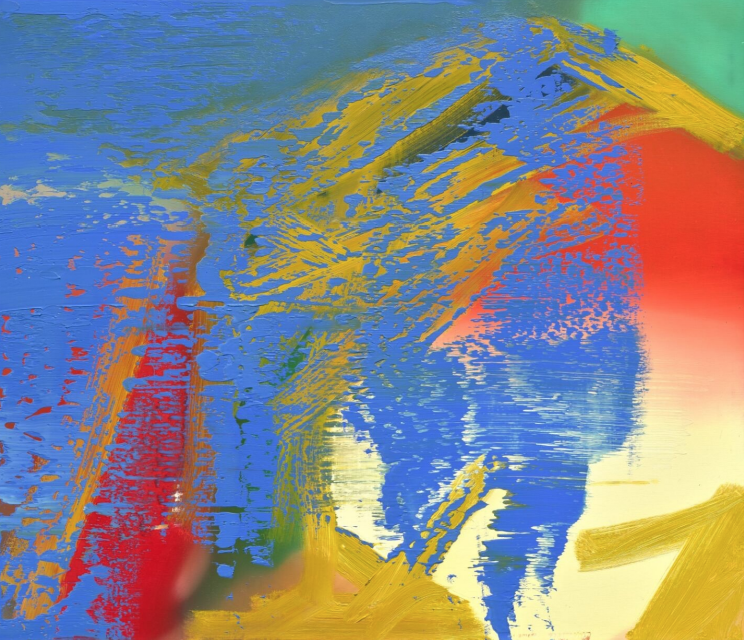
Gerhard Richter – Abstract image (456-2) 1980 – Oil on canvas – 65×80 cm – Presented by Galerie Von Vertes
The Abstraktes Bild (“Abstract Paintings”) they form an impressive caesura in the artist who works and announces a new era in his creative production. Instead of monochrome colors, a polychrome work now shines; instead of monotonous brushwork, squeegees and brushes dance on the canvas; and instead of order, controlled chaos reigns in the composition. Color is the palette of Abstract Picture (456-2) it is one of the most varied and lively on the artistic scene. The energetic brushstrokes and varied color palette culminate in an exciting overall composition that captures the eye and constantly reveals new ways of seeing.
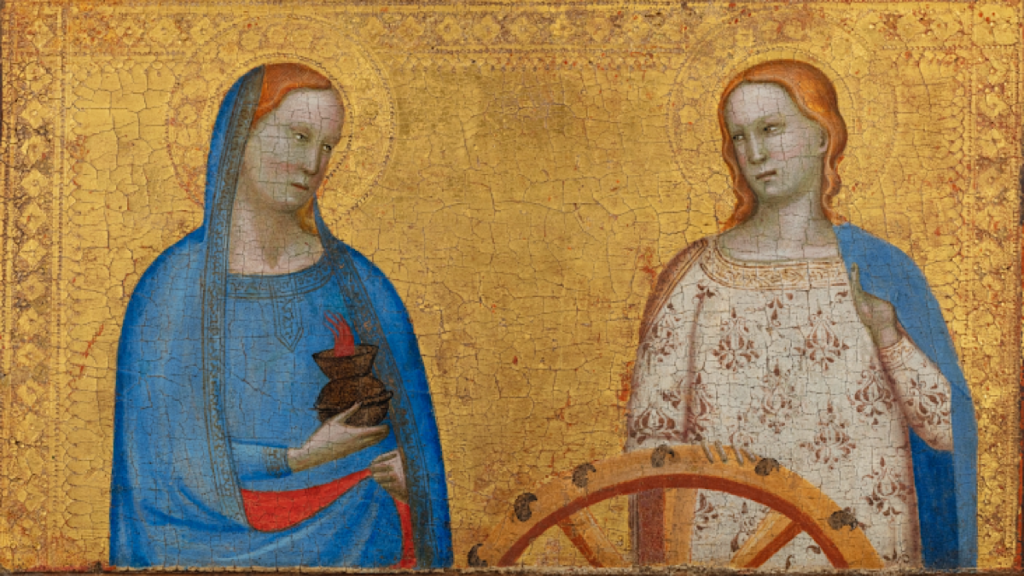
And finally to return to the charm of ancient art, a work by Bernardo Daddi – Part of the predella of the polyptych from the church of San Giorgio a Ruballa: Saint Lucia and Saint Catherine of Alexandria 1348, Tempera on wood, 21 x 38,6 cm – Presented by Brimo De Laroussilhe. The valuable tablet depicting it arrives Saint Lucia and Saint Catherine from the predella of the polyptych from the church of San Giorgio a Ruballa in Bagno a Ripoli, near Florence. Created by Bernardo Daddi in 1348, the polyptych is today preserved at the Courtauld Institute in London, while the other panels that originally constituted the predella are found in private collections and the Musée des Beaux-Arts in Strasbourg. The ensemble is Bernardo Daddi. It is the last signed and dated work, created shortly before he died during the Black Death in 1348.

